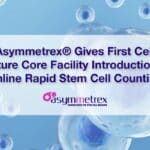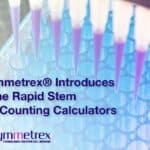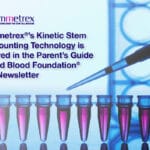This interview was created ahead of the Predictive Toxicology Summit taking place in London from 16th – 18th February 2015. To find out more about this and other topics covered in this industry leading conference please download the event agenda here. To view as a PDF click here.
Pharma IQ: What have been the major advancements in using stem cells for toxicology testing?
James Sherley: I think the most recent advance, and probably the most well-known, is the production of induced pluripotent stem cells. And the reason for that is that induced pluripotent stem cells give investigators the opportunity to develop many different types of tissues that are otherwise hard to get for toxicology testing.
These cells can be produced from consenting adult tissue, tissue from consenting adults; they can be grown in large quantity, which is one of the limiting things from looking at other types of stem cells that we’ll discuss; and there’s technology going forward now to convert those cells into different types of tissues. And there’s one particularly important advantage. And that is the ability to produce tissues from individuals with disease. And so that gives an opportunity not only to do the testing in the normal differentiated tissue types, but also to do testing for drugs in terms of diseased tissues where toxicological differences might occur.
Pharma IQ: Pluripotent, unipotent and multipotent stem cells obviously have different applications in toxicology. What are they and what makes them suited to these roles?
Sherley: In toxicology, because mainly we’re talking about developing drugs that are going to be taken by people who are postnatal – so children and adults – there’s a need to really be looking for ways of testing the toxicology of the stem cells that are in those mature tissues. In that sense embryonic stem cells, which are a pluripotent stem cell type derived from embryos and induced pluripotent stem cells, which we’re discussing, those cells are not found in the mature body. Their role is not in doing direct toxicology testing.
As I mentioned earlier, the excitement around induced pluripotent stem cells has posed no ethical problems, as that they allow you to make the types of tissues that one would like to evaluate for toxicity – so mature heart tissue, mature liver tissue, mature bladder and kidney. That’s where the pluripotent stem cells play the role. They give an opportunity to produce these tissues that might otherwise be hard to get.
Now, most of the things that happen when you use induced pluripotent stem cells, that you produce, are mature differentiated tissues. It’s only in the past year or so that papers that have started to appear, that people are starting to use pluripotent stem cells themselves and try to make the mature stem cells, the so-called tissue or adult stem cells that are found in mature individuals. And that’s where there’s a big void of toxicological testing. And the reason is because there are two challenges to being able to evaluate these adult or tissue stem cells.
They’re rare in tissues. That means they’re hard to come by and, more importantly, they’re out there and invisible in tissues. We don’t have biomarkers or even morphological markers that allow us to say retrospectively or, more importantly, prospectively that a cell is, in fact, a tissue stem cell. There are no assays, really, for testing these mature cell types. And so, pluripotent stem cells give an opportunity to perhaps produce them. But if that happens, because the pluripotent populations are still fairly mixed and they are still going to have a minority of the tissue stem cells, we’re still faced with the same problem as if you were to take a tissue from an individual – stem cell number is low and there are no biomarkers for them.
One of the challenges in the field, whether you’re talking about pluripotent cells or these multipotent and unipotent tissue stem cells, is metaphorically being able to “see” the cell so that you can evaluate its response to various drugs and other toxic agents.
Pharma IQ: What are the current challenges that need to be overcome in using stem cells for toxicology?
Sherley: You have to take this in terms of the two main categories to answer the question. In the case of the target cell – that’s the natural occurring stem cell that’s in every one of our tissues, whether you’re talking about the ones that might be in our brains or the ones in the liver – that’s what we really want to understand about drug toxicity. Because it’s those cells where, if there is a drug which attacks those cells – whether it be specifically or just generally – that will compromise any organ and tissue that that drug touches. When you knock out or destroy the stem cell with a tissue, you destroy the ability of the tissue to renew itself.
An important aspect in thinking about toxicology of stem cells is that most of our tissues – and when I say most I mean 99% or more and I’d be hard-pressed to actually come up with an example myself of something that doesn’t fit this – most of our tissues are doing something that we call turning over. There are stem cells that are rare in number that are dividing, undergoing a process called asymmetric self-renewal – and that means the cell divides and makes another stem cell, or another group of stem cells, and then it makes cells which are not stem cells anymore, they’re differentiating cells.
They’re like the cells that are going to produce your hair or your skin or the muscle in your limbs. And those cells are constantly being produced. We’re constantly renewing
ourselves. You need the stem cell to do that. So, if you have a drug which affects a transient cell, these cells, which are differentiating, they can be replaced. When the drugs are removed, they can be renewed from the stem cell. But if a drug knocks out a stem cell in the tissue, that
tissue is gone, there’s no way to reproduce it. And that’s why this type of toxicity is so important, and it’s likely to be the kind of toxicity that ultimately makes drugs intolerable by patients.
The challenges we have there are that the cells are difficult to identify and they’re difficult to get in large number to be able to do toxicological testing. If you ask how do we find out about whether drugs are toxic to patients currently. Well, in some animal studies you can discern this. They’re very expensive animal models because, for instance, if you treat an animal with a drug and they stop making blood and they stop making all of these different types of blood cells, then you have a pretty good indication that you affected a hematopoietic stem cell. You could find this on an animal. The problem is that a drug might be toxic in the animal and it might not be toxic in the patient – and vice versa. You might not see any effects on the hematopoietic stem cell of the animal and there might be effects in the human case. So, it’s very challenging to be able to test these drugs.
The next place we find out is in Phase I clinical trials. Probably many of the drugs which fail because of toxicity in Phase I trials, they may be either acute toxicity to mature tissue, or they could also be due to toxicity against stem cells. And we don’t know that that’s why those drugs failed.
The other place we find out sometimes is in the marketplace when in chronic treatment of large numbers of patients, we discover that there’s a drug, which is, in fact, having a chronic effect on tissue stem cells, causing a type of toxicity that accumulates and grows in patients. And Vioxx might be a drug like that. There’s a suggestion now that that drug, in fact, affects the progenitor cells, the stem cells that make blood vessels. The challenges that we have in the case of these tissue stem cells is the same challenge that we have in the case of pluripotent production of them. They will be rare in the populations, and we can’t identify them; and maybe we can’t get enough of them to do assays.
Now, in the case of pluripotent cells we have some additional challenges because, remember, the idea is that you have a cell that you converted into a pluripotent state, which you can grow in large numbers. The list of problems are the following. The stability of the culture, sometimes these cultures are very difficult to stabilise; mutations, mutations of the DNA sequence and mutations of the proteins that regulate the DNA. These are called epigenetic changes. Those changes compromise the function of the cells that we produce by these pluripotent cells; and I think there has not been enough attention given to what is going to be the consequences of using even differentiated cells produced from pluripotent cells for toxicology ,when they are not normal because they have mutations.
One of the things that is starting to emerge is that, as I said at the very beginning, we’re interested in being able to do toxicology for the tissues in children and in adults, mature cells, mature tissues. In many cases, the cells that can be produced – these differentiated cells – from the pluripotent cells, they’re like normal human development. They tend to be cells that are immature.
The kinds of tissue cells that you would find in the foetus are the differentiated cells. And again, we really want to get as close as we can to the type of tissue that represents that patient who will be taking the drug. That’s where the toxicity really matters; and it’s not really clearly established yet that these induced pluripotent stem cells are going to give us those types of cells because of these problems that I’ve just mentioned.
Pharma IQ: What are going to be the trends in using stem cells for toxicology over the coming 18 months?
Sherley: Yes, that’s a very short horizon, 18 months. We’re used to making predictions over much longer horizons of maybe five years or ten years or more. I think we can say that people are going to work on the problems that are limiting. You can’t solve the most important problem, the other ones don’t really matter.
Let’s just say, for the sake of argument, that the cells that are produced – the differentiated or, for that matter, the multipotent and unipotent stem cells that are produced from pluripotent cells – are actually going to be okay. They’re not going to have mutations that are going to create problems for them. People are going to figure out how to make mature ones. I think that’s something that’s going on right now; and it wouldn’t surprise me if in 18 months somebody says, “I figured out how to get mature cells from my induced pluripotent stem cells.” That’s one.
When we get there, we still have the same fundamental problems of needing, one, biomarkers that are specific for tissue stem cells. You need to identify some flag on the cell, some component on these cells that is only found in those tissue stem cells, not found in any other types. The biomarkers we currently have are found in tissue stem cells, but they’re also found in the committed progenitors that those stem cells make. And, in any tissue, there are many more committed progenitors than there are stem cells. Those biomarkers are not very good.
It is amazing to me that currently we can do a bone marrow transplant for 50 years, and we cannot count hematopoietic stem cells. And if we could count them, that means we could identify them. We could do better toxicological testing. Finding those specific biomarkers, if that were to happen in the next 18 months or so, that would be terrific. And people are working on that.
The third issue is quantity. Toxicological testing, if you want to be able to standardise it and have them be reproduced in many different companies or many different places, you need to have volume. One of the things that we also need is to have a way of expanding and making more tissue stem cells – now that they are naturally occurring out of someone who has donated tissue, cadaveric donor tissue, or whether it’s being produced fom induced pluripotent stem cells. In either case, we’ve got to figure out a way to make more of them. And that’s something that my company works on. I feel fairly confident saying that we’re going to make some progress with that in the next 18 months or so. There are technologies that have been
described. They work in the laboratory. We’re trying to advance them into manufacturing scale.
I think those are the three things: we’ve got to get better biomarkers; we have to be able to produce the cells; and in the case of the induced pluripotent stem cells, we have to be able to make mature cells as well as tissue specific stem cells from that system.
Pharma IQ: Do you have any examples from industry of the application of stem cells in toxicology?
Sherley: It’s interesting. Because of my company’s goal of producing new assays for tissue stem cells, I’ve been talking with Pharma companies about this; and it’s quite interesting. One set of companies – and I use the s at the end liberally, it could be only one company. But there are companies out there now that are looking for drugs, which are toxic against cancer stem cells; and you would think, well, those are the companies that should surely be interested in being able to identify drugs that are also going to be toxic against normal stem cells, because that would be a real problem for their drugs. In fact, the companies are not interested in doing that test. I think that’s a unique feature of the cancer field, where we already have lots of drugs. The ones that do work often are toxic to stem cells.
What I would suggest is that you need an assay for not just stem cell toxicology, but for stem cell effects, be they positive or negative. But in general, because there hasn’t been a way to test for stem cell toxicology, companies haven’t been doing anything about it. Mainly I think they don’t specify whether toxicity is stem cell specific or not. If it’s intolerable, it doesn’t matter what the cause is. That is a reason for not moving forward with a drug in development. I think that probably the biggest concerns about this is having stealth drugs that are toxic to stem cells in a chronic fashion. You don’t pick it up when you’re doing your preclinical studies. You don’t pick it up in Phase I trials. I think you pick it up in late phase trials. You pick it up later on when you’re treating more patients for longer periods of time.
I think the issue that’s going to be important for drugs that are chronic treatment drugs – the drug you have to get up and take every day. If those drugs are stem cell toxic, they’re going to be a real problem when people are being treated with them. I think Pharma is aware of this problem, but there isn’t anything much you can do about it because there’s been no way to know if a drug has that property until it’s causing trouble.
There’s a lot of interest in predictive toxicology, because many of these drugs you might even not take them to clinical testing if you knew at the very onset, when you’ve got your first compound list of lead compounds or even pre-lead compounds. If you knew they were going to be toxic to tissue stem cells, you probably would take them out of the pipeline at that point.
I think Pharma has been interested in this problem, because, on first principles, drugs which are toxic to stem cells are going to be difficult drugs to use in patients. I think most Pharma gets that, but in the past they’ve had nothing they could do about it. You can’t count the stem cell, can’t see the stem cell, can’t grow the stem cell. How can you do toxicological testing, except in an animal model? If new tools become available, Pharma is ready to use them even though they haven’t really been focused on this problem, because there’s nothing that one can do about it.







Leave a Reply